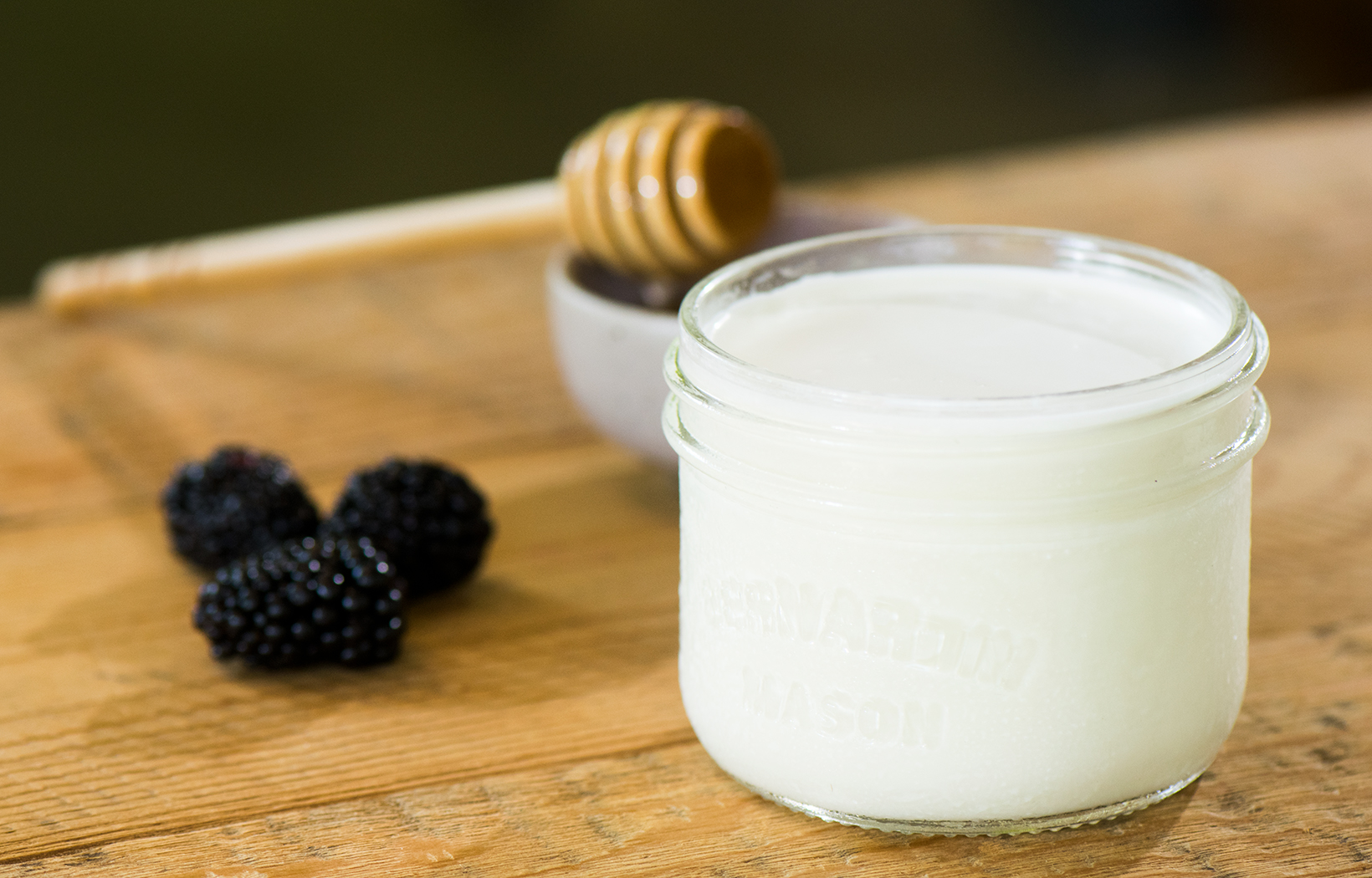Yogurt is far from a modern invention – people have been fermenting milk for thousands of years. Many warm regions, from Central Asia to the Balkans, developed yogurt as a way to preserve milk without refrigeration. This age-old practice created a tangy, probiotic-rich food that villagers cherished long before scientists took notice.
Ilya Mechnikov and the Natural Yogurt Revolution
At the turn of the 20th century, a curious Russian biologist named Ilya (Elie) Mechnikov became fascinated by natural yogurt and longevity. In 1904, Mechnikov gave a public lecture proposing a bold idea. That harmful bacteria in our intestines accelerate aging. And that eating live yoghurt or other fermented milk could introduce beneficial bacteria to counter this process. Mechnikov had observed that people in Bulgarian villages – known for their exceptional longevity – consumed yogurt daily. He noted that a particular “Bulgarian bacillus” found in real yogurt might be the key. This bacterium (later named Lactobacillus bulgaricus) produces lactic acid that suppresses the “intestinal putrefaction” associated with aging. In essence, Mechnikov believed that a daily serving of natural yogurt could help people live longer by keeping the gut healthy.
Mechnikov’s ideas ignited a worldwide yogurt craze. Newspapers in Paris, London, and Chicago carried sensational headlines. “Sour Milk Is Elixir: Secret of Long Life Discovered by Prof. Metchnikoff”. In 1905, Parisians flocked to a new shop to buy yogurt they thought would prevent aging. Ads in Europe touted “the delicious Bulgarian curdled milk that the illustrious Professor Metchnikoff has recommended for suppressing the disastrous effects of old age”. Mechnikov himself was cautious and viewed yogurt as a hypothesis rather than a guaranteed cure. However, the public was captivated by the idea of live yoghurt as a fountain of youth. In 1908, Mechnikov was awarded the Nobel Prize in Physiology or Medicine (for his pioneering work in immunology). Of course, this only boosted yogurt’s reputation. Suddenly, this humble fermented milk from the Balkans was on its way to becoming a scientifically endorsed health food around the world.
Bringing Real Yogurt to the West: The Danone Story
Mechnikov’s revelations did not stay confined to lectures – they inspired entrepreneurs to bring real yogurt to a broader market. In 1919, Isaac Carasso, a Balkan-born doctor living in Spain, took up Mechnikov’s idea. He noticed many children in Barcelona suffered from digestive issues, and he remembered how, back in the Balkans, natural yogurt was used as a remedy. Carasso decided to produce yogurt commercially as a health food. He founded a small yogurt company in Barcelona and named it Danone – after his son Daniel (the name might ring a bell with yogurt lovers today!). At first, Carasso’s real yogurt was literally treated like medicine. He cultured Balkan yogurt using ferments from Mechnikov’s laboratory at the Pasteur Institute and sold the yogurt in pharmacies, packaged in small porcelain jars. Doctors would recommend Danone yogurt for children with intestinal troubles, and selling through drugstores gave it a trustworthy, medicinal image.
Danone’s Real Yogurt Journey to America
Carasso’s approach paid off. Danone yogurt quickly gained a reputation for its quality and health benefits. By combining age-old Balkan yogurt tradition with cutting-edge science, he effectively reinvented yogurt as a modern health product. In the 1920s, his son, Daniel Carasso, expanded the business into France, opening the first yogurt shop in Paris. The family kept emphasizing yogurt’s health properties while also making it tasty and appealing. Eventually, the Danone brand crossed the Atlantic. In 1942, Daniel Carasso brought yogurt to the United States and started selling it in New York under a slightly modified name – Dannon.
This was the beginning of America’s yogurt journey. Yogurt was initially unfamiliar to many Americans (often seen as an “ethnic” or fad food). But its fortunes changed in the coming decades. By the 1960s, health-conscious and back-to-basics movements in the U.S. embraced real yogurt as a wholesome food, and nationwide sales began to climb steadily. What started as a medicinal remedy in a Spanish pharmacy had become a household staple in America.
Live Yoghurt Cultures: From Medicine to Daily Delight
It’s fascinating to think that yogurt was first sold in pharmacies as a medicine. In the early 20th century, drugstores in Europe and the U.S. offered yogurt and even pills or powders of “Bulgarian” bacterial cultures for health purposes. Doctors prescribed “sour milk” (as yogurt was often called) to treat everything from digestive issues to arteriosclerosis. The idea of probiotics – consuming live beneficial microbes – was born from Mechnikov’s work and was applied through these early yogurt products.
Each jar of live yoghurt was teeming with friendly bacteria to help balance the gut. Over time, as scientific understanding grew and refrigeration became common, yogurt transitioned from a prescribed remedy to an everyday food. What used to be a “secret remedy” from the Balkans turned into a global breakfast and snack item. Today, when you enjoy a cup of yogurt, you’re part of this history – benefiting from those same live cultures that Mechnikov and Carasso championed over a century ago.
Yet, as yogurt moved into the mainstream, its identity started to split. On one hand, there is real yogurt – the traditional, tangy product full of live cultures and natural goodness. On the other hand, the food industry introduced shortcuts to make yogurt sweeter, thicker, and longer-lasting for mass production. This brings us to an important point for yogurt lovers: not all yogurt products are equal in quality or health benefits.
Yogurt with Less Sugar: A Return to Real Flavor
Modern shoppers face an aisle full of flavored and processed yogurts, many of which barely resemble the natural yogurt that Mechnikov studied. The hard truth is that some popular yogurts are sugar bombs or dessert in disguise. Common commercial brands can be laden with sugar or high-fructose corn syrup, along with thickeners and additives that mask the true tartness of real yogurt. It’s not unusual to find fruit yogurts with 20–30 grams of sugar per serving – more than a candy bar. This added sweetness may please the palate, but it undermines yogurt’s health benefits.
Nutrition experts advise looking for yogurt with less sugar – ideally with no added sugar at all – so that you’re mainly getting the milk’s natural lactose and nothing more. Remember, yogurt was traditionally enjoyed plain or with a bit of fresh fruit and honey. Its naturally tart flavor is a sign of those live cultures at work, and that tartness is part of the authentic experience.
Choosing yogurt with less sugar lets you taste the real thing. In fact, the healthiest yogurts often have a very short ingredient list. According to dietitians, the best option is yogurt made with just milk and live active cultures – nothing else. This simple composition preserves the tangy flavor and probiotic content that make yogurt special. If you find plain yogurt too tart at first, you can always add a touch of natural sweetness at home (like stirring in berries or a drizzle of honey) instead of buying a heavily sweetened product. By cutting down on added sugars, you’re getting yogurt as it was meant to be. A live, fermented milk with a pleasantly sour taste and robust health benefits.
Sheep Milk Yogurt: The Real Deal for Yogurt Lovers
After learning the incredible history of yogurt, you might be craving a bowl of it right now! But as we’ve seen, it’s important to choose real yogurt – the kind made naturally, without unnecessary additives or shortcuts. One way to experience yogurt in its purest form is to try sheep yogurt, which is yogurt made from sheep’s milk. In fact, in traditional yogurt-making cultures like Bulgaria, sheep milk has long been considered the most prized and flavorful base for yogurt. Sheep milk yogurt has a rich, creamy texture and a slightly sweeter taste than cow’s milk yogurt, yet it’s usually made with the same simple process: just milk and live bacterial cultures. Sheep milk is also high in protein and nutrients, and many people find it easy to digest due to its smaller fat globules. It truly delivers the real yogurt experience our ancestors enjoyed – unadulterated and naturally delicious.
Sheep Milk Yogurt Made the Real Way
Just as Isaac Carasso perfected yogurt a century ago by sticking to the basics, we at Secret Lands Farm take yogurt back to its roots. Our sheep milk yogurt checks all the boxes for an authentic, wholesome yogurt. It contains only pure sheep’s milk and live cultures – no preservatives, no gelatin or thickeners, and no added sugar. We let nature do the work, slowly fermenting our farm-fresh sheep’s milk to create a thick, velvety yogurt with a mild tang. The result is live yoghurt teeming with beneficial probiotics and a flavor that’s delightfully real. We are proud to show you our labels, because the ingredients list is as simple as it gets.
Every spoonful of our yogurt carries forward the legacy of Mechnikov’s discovery. It’s natural yogurt made with care and respect for tradition. Incorporating a daily serving of this kind of yogurt into your diet is not just a treat for your taste buds, but a nod to a century of history and health wisdom. From a Nobel Prize-winning scientist in the Balkans to a family farm in Canada, the story of yogurt comes full circle. So go ahead and enjoy your yogurt daily – just make sure it’s the real thing. Try our Secret Lands Farm sheep milk yogurt, and taste the difference of yogurt made naturally, just as it was meant to be. Your gut (and your palate) will thank you for it!
References
- Nobel Prize. Elie Metchnikoff – Biographical. NobelPrize.org. (Background on Mechnikov’s life and research)
- Smithsonian Magazine. A Science Lecture Accidentally Sparked a Global Craze for Yogurt. (April 11, 2016)smithsonianmag.com
- Nautilus. The Man Who Drank Cholera and Launched the Yogurt Craze. (Lina Zeldovich, 2019)nautil.us
- Danone Group. The History of Danone. (Company website) danone.com
- Wikipedia. Isaac Carasso. (Founder of Danone) en.wikipedia.org
- Naturopathic Gourmet. Yogurts Are Not Created Equal. (Dr. Sarah Cimperman, 2012) naturopathicgourmet.blogspot.com
- Health.com. What Makes Some Flavored Yogurts Unhealthy? (Nutrition expert advice) health.com
- Agricultural Museums. Yoghurt – a traditional food for Bulgarians. (March 30, 2023) agriculturalmuseums.org




